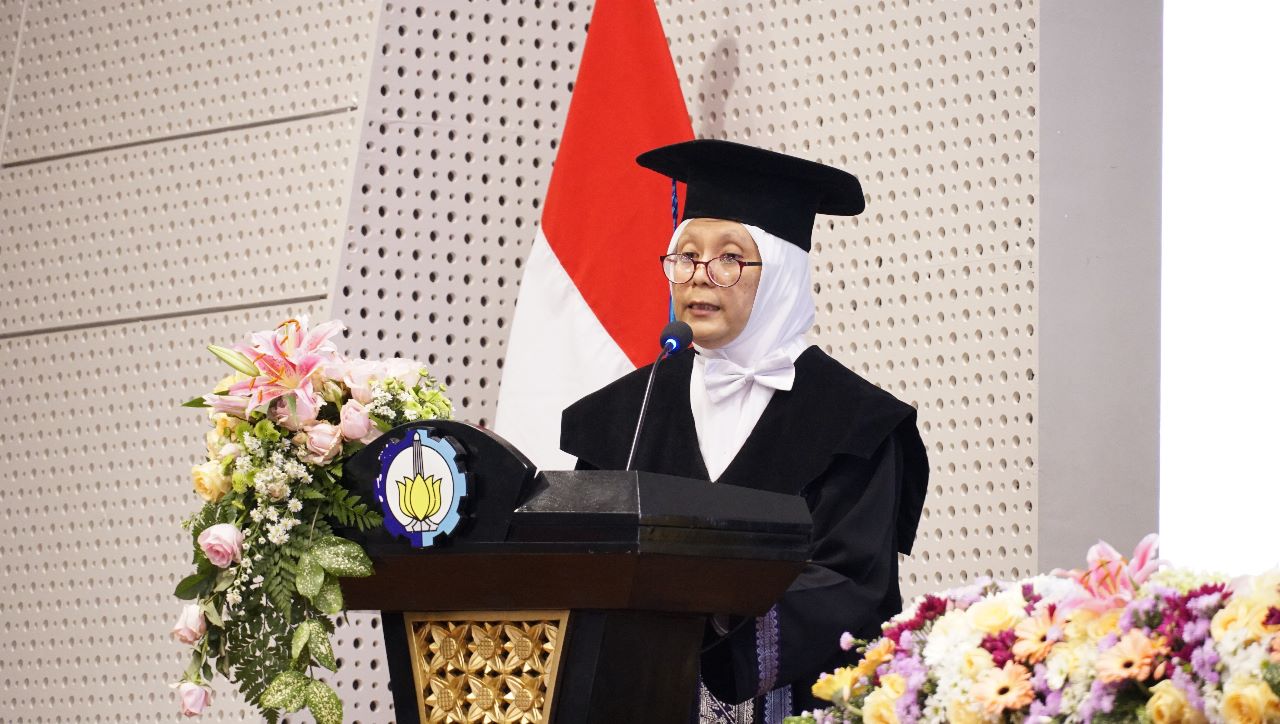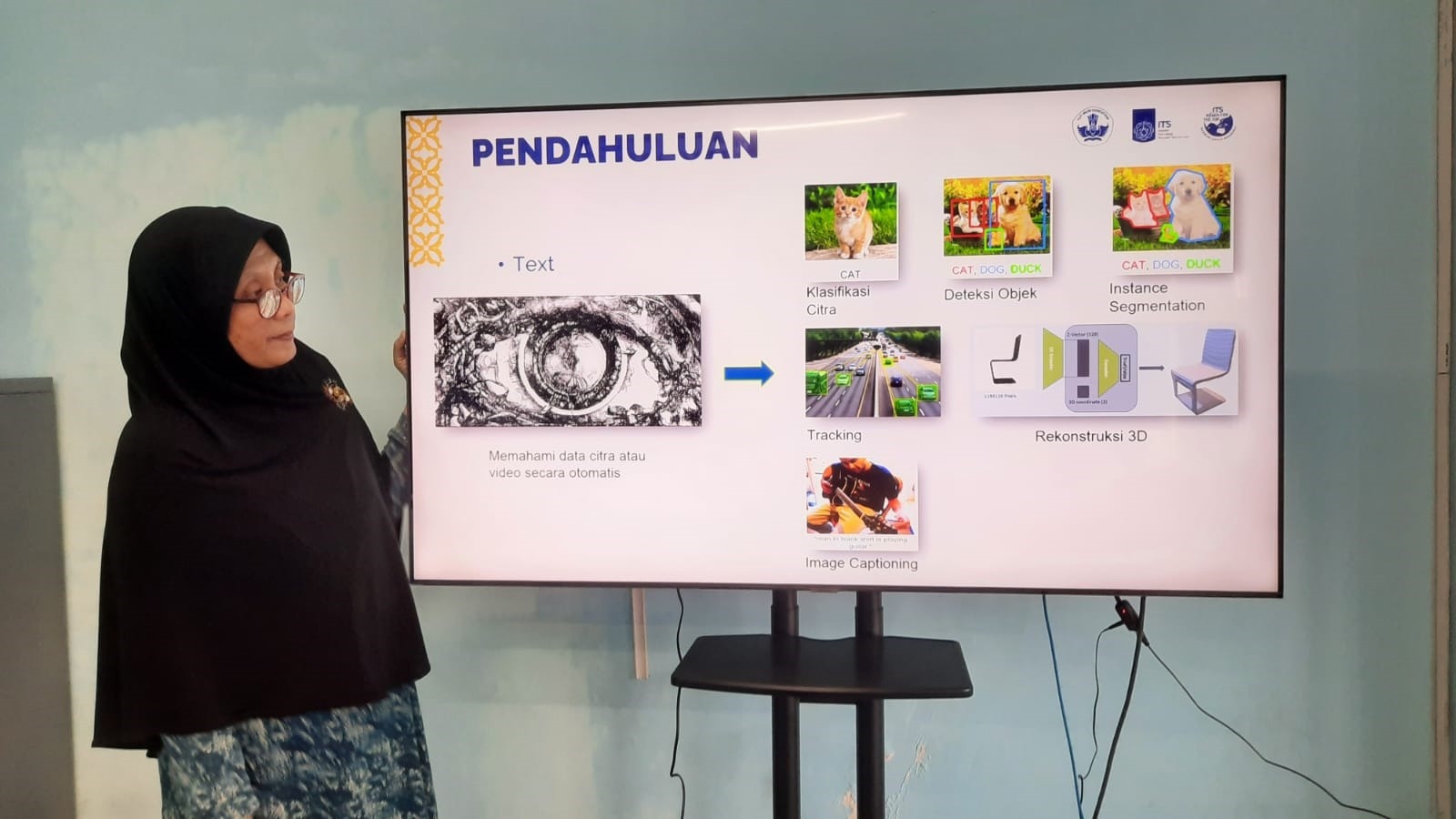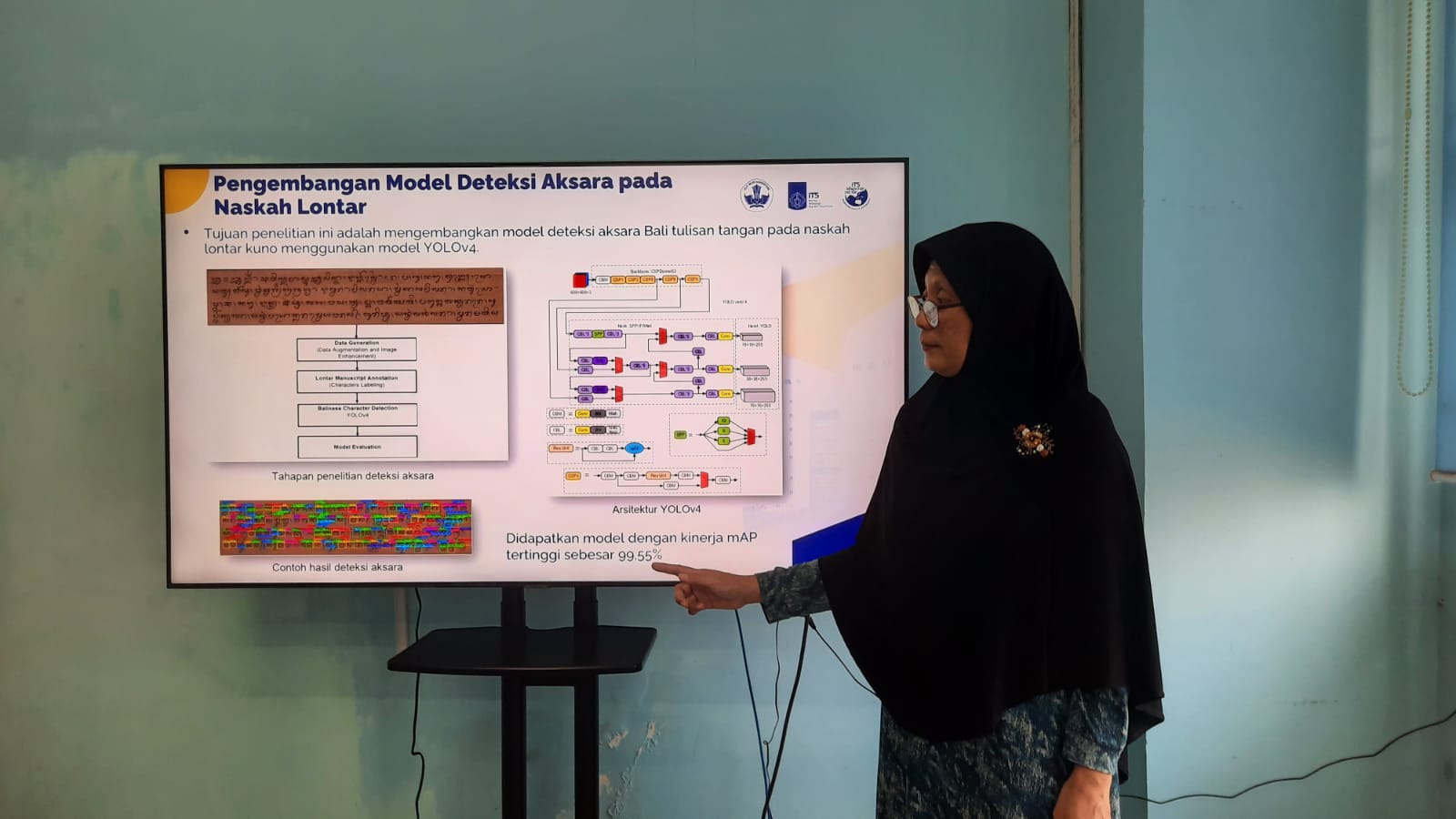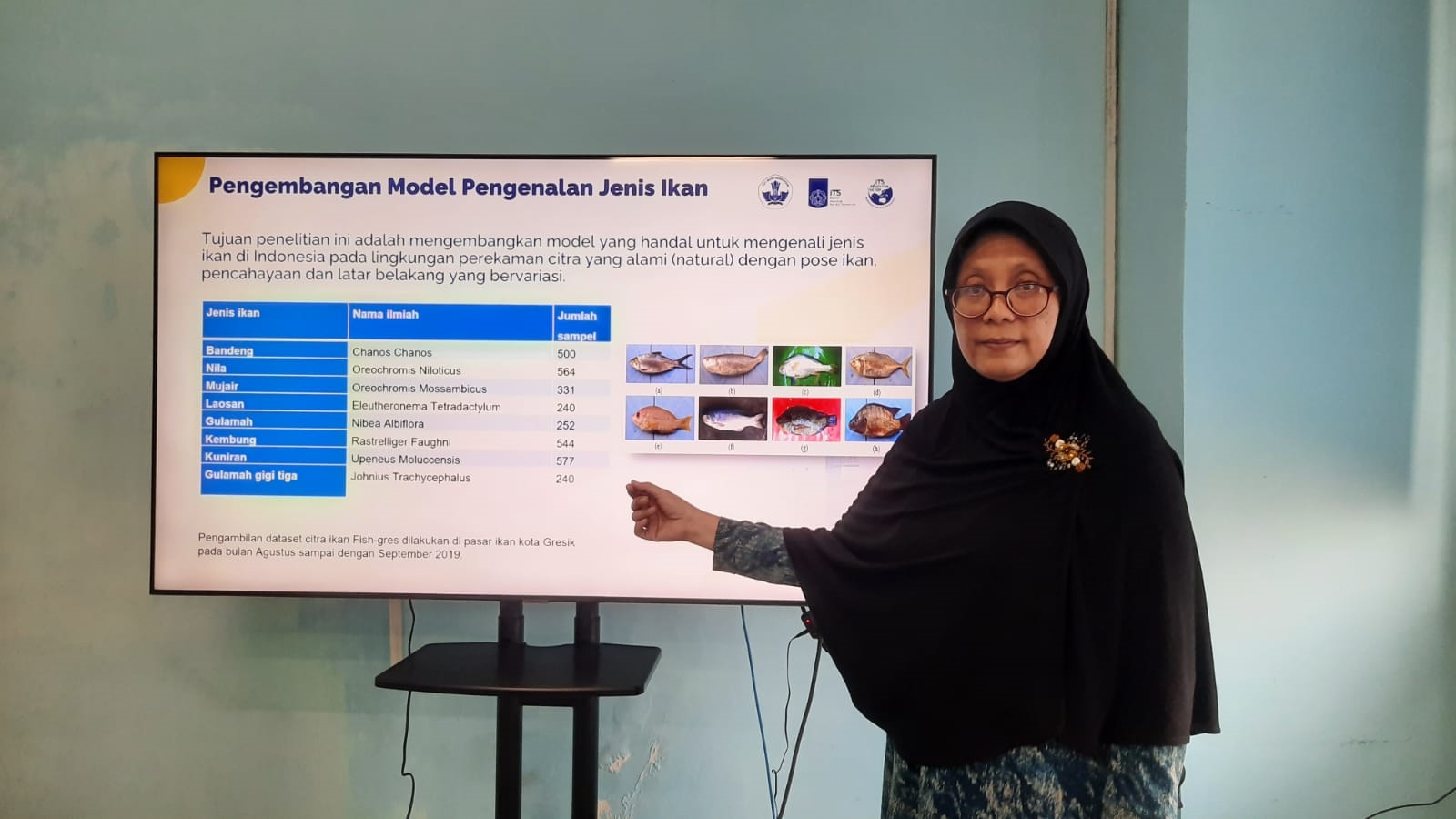ITS Professor Encourages the Use of AI for the Preservation of Ancient Manuscripts

Prof. Dr. Eng Nanik Suciati SKom MKom when explaining his scientific oration at his inauguration procession as the 161st Professor or Professor of ITS
ITS Campus, ITS News – With its various innovations, artificial intelligence (AI) is proven to help human life. Seeing the progress of AI, encouraged the professor of the Institut Teknologi Sepuluh Nopember (ITS) Prof. Dr. Eng Nanik Suciati SKom MKom to develop computer vision in AI through research which is a form of advancing the ability of AI information analysis.
The research which was used as a scientific oration entitled Computer Vision: Techniques, Roles, and Challenges in Analyzing Visual Information has led Nanik to be inaugurated as the 161st Professor of ITS. The discussion on Nanik’s scientific oration also shows a form of progress in how AI can work better by deepening computer vision. “With the development of computer vision, we can produce AI that is more accurate in its work,” he explained.
Furthermore, Nanik said, computer vision is a field of science that mimics the human ability to see and understand the environment to complete certain tasks. Here the camera sensor helps AI to record visual information in the form of images. Furthermore, the data is processed with various processing techniques such as Deep Learning, Machine Learning, and others to produce an understanding of the content of the information received by AI.

The 161st professor of ITS Prof. Dr. Eng Nanik Suciati SKom MKom when explaining the various kinds of tasks that can be done by AI with computer vision
This woman from Pasuruan discussed several studies that have been conducted in the field of Computer Vision. Some of these studies include developing a model for recognizing fish species, developing a model for detecting Balinese script in Lontar manuscripts, and developing a model for recognizing Indonesian sign language. “The implementation of this field can be of various kinds, but my research focuses on three areas,” said the lecturer of the Department of Informatics Engineering.
The lecturer who has received the Satyalancana Karya Satya XX award from the President of the Republic of Indonesia also said that in his research regarding the introduction of fish species, he discussed eight types of consumption fish. Computer vision here is used to identify the type of fish, its freshness level, and so on. The development of this recognition allows researchers to classify fish species more efficiently thereby facilitating future research.

Prof. Dr. Eng Nanik Suciati SKom MKom explained how to implement computer vision in his research on ancient script recognition
Furthermore, in his research on the introduction of Balinese script, the Head of the Intelligent Computing and Vision Laboratory considered the process to be quite challenging because the script was in an ancient lontar script. Lontar manuscripts are Balinese historical heritage documents written using a special knife (pengrupak) on dry palm leaves. Even so, the wife of Ludi Hariyanto is persistent in carrying out her research. Nanik assesses that the application of AI here will facilitate the preservation of ancient cultures in the future.
Nanik considers her research focusing on sign language to be the most challenging. This is because the dataset used for AI is in the form of video, so AI does more work. To stabilize AI performance, Nanik uses the Coordinate Recalculation normalization technique to reduce variations in the coordinates of key points to video frames, so that AI recognition is more stable and more accurate in images.
Prof. Dr. Eng Nanik Suciati SKom MKom when explaining the results of his research on the introduction of fish species with the implementation of computer vision
Despite the many roles and benefits provided by computer vision in AI, the challenges behind it cannot be separated. This master’s graduate from Hiroshima University, Japan explained, the general problem lies in the insufficient dataset to train Deep Learning so that AI completes its tasks. Even so, Nanik assesses that his research can be said to be successful. “In the word sign recognition test, AI produced the highest accuracy performance of 99.90 percent,” said this mother of four children.
Finally, this member of the Indonesian Artificial Intelligence Society sees artificial intelligence technology as providing many positive things. During her time as a lecturer at ITS, Nanik was grateful because AI research was getting deepened over time. “Hopefully, through my computer vision research, it can benefit the nation and help improve the quality of higher education tri dharma,” he concluded hopefully. (ITS Public Relation)
Reporter: Gandhi Kesuma
Related News
-
ITS Sends Off 12 Free Mudik Vehicles Ahead of Eid Al-Fitr
The dispatch of 11 bus fleets carrying ITS students for the Free Mudik ITS 2024 ITS Campus, ITS News
August 14, 2023 11:08 -
ITS Lecturer Wins 2024 Female Science Talents Intensive Tracks from Germany
Sri Fatmawati SSi MSc PhD, a lecturer at the Department of Chemistry, ITS, has emerged as the winner of
August 14, 2023 11:08 -
ITS Shares Tips & Tricks on SNBT 2024 Socialization
(from left) Executive Secretary of SNPMB 2024, Bekti Cahyo Hidayanto SSi MKom, Head of the Admissions Subdirectorate at ITS,
August 14, 2023 11:08 -
Supporting Defense in Indonesia, ITS Professor Creates Anti-Radar Material
Professor Dr. Mashuri SSi MSi, while delivering his academic oration on anti-radar materials during the ITS Professorial Inauguration. ITS
August 14, 2023 11:08

